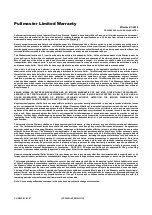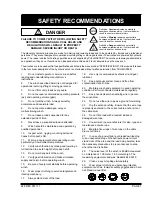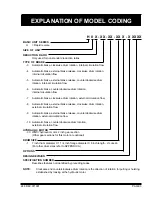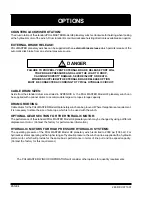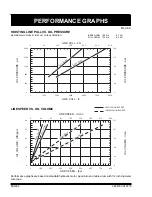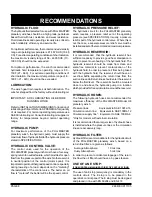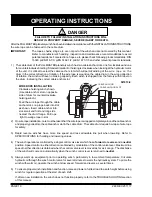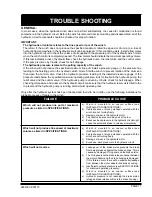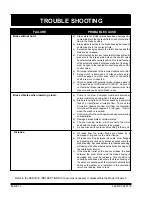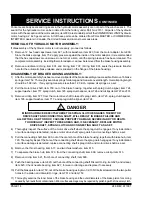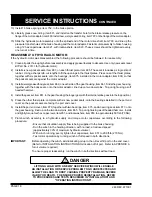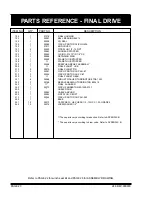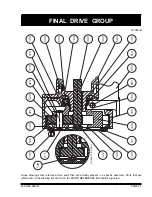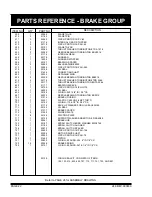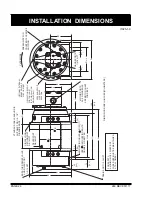
PAGE 11
a)
Winch is mounted to an uneven surface (see
INSTALLATION INSTRUCTIONS).
b)
Cable sheaves or block purchase operated with the
winch are not turning freely.
c)
Damage or wear in the hydraulic motor.
d)
The relief valve pressure may be set too low.
e)
Excessive back pressure in the hydraulic circuit might
cause the automatic brake to release momentarily.
a)
Winch is mounted to an uneven surface (see
INSTALLATION INSTRUCTIONS).
b)
Cable sheaves or block purchase operated with the
winch are not turning freely.
c)
Damage or wear in the hydraulic motor
d)
Excessive back pressure in the hydraulic circuit.
a)
Leakage out of the brake piston prevents the brake
from being released against the brake springs. This is
caused by damaged O-ring seals on the brake piston.
b)
The O-ring seals on the brake release channel between
the motor adaptor and the brake housing is damaged.
If this failure occurs there will be substantial leakage
from between the motor adaptor and brake housing.
c)
Insufficient hydraulic pressure (see SPECIFICATIONS
for minimum operating pressure).
d)
Winch is mounted to an uneven surface (see
INSTALLATION INSTRUCTIONS).
e)
Hydraulic pressure is not reaching the brake piston
(plugged brake release orifice in the brake housing).
PROBABLE CAUSE
FAILURE
GENERAL:
In most cases, when the hydraulic winch does not perform satisfactorily, the cause for malfunction is found
somewhere in the hydraulic circuit. Before the winch is removed from its mounting and disassembled, all of the
hydraulic circuit components should be checked for proper function.
IMPORTANT:
The hydraulic oil volume relates to the line speed or rpm of the winch.
Therefore, if the winch does not produce the specified maximum rated line speed or drum rpm, a loss of
hydraulic flow somewhere in the hydraulic circuit can be analysed. If this condition exists, install a flow meter
into the hydraulic circuit to check the volume of oil supplied to the pressure port of the hydraulic winch motor
when the winch control is completely opened. The flow meter should indicate the maximum operating volume.
If this test indicates a loss of hydraulic flow, check the hydraulic pump, the relief valve and the control valve.
If the pump is driven by V-belts, check for belt slippage.
The hydraulic pressure relates to the pulling capacity of the winch.
If the winch will not produce the specified maximum line pull, install a pressure gauge in the pressure line
leading to the hoisting port on the hydraulic winch motor. Stall the winch to prevent rotation of the drum and
then open the control valve. Check the hydraulic pressure reading of the installed pressure gauge. If the
pressure reads below the specified maximum operating pressure, look for trouble in the hydraulic pump, the
relief valve and the control valve. If the hydraulic pump is driven by V-belts, check for belt slippage. When
checking oil pressure and volume in the hydraulic circuit, make sure that the hydraulic reservoir is filled to the
top level and the hydraulic pump is running at maximum operating rpm.
Only after the hydraulic system has been checked and found to be in order, use the following indications for
probable causes of failure in the winch:
Winch will not reverse.
Winch will not produce line speed at maximum
volume as listed in SPECIFICATIONS.
Winch will not produce line pull at maximum
pressure as listed in SPECIFICATIONS.
248 REV.950715
TROUBLE SHOOTING


